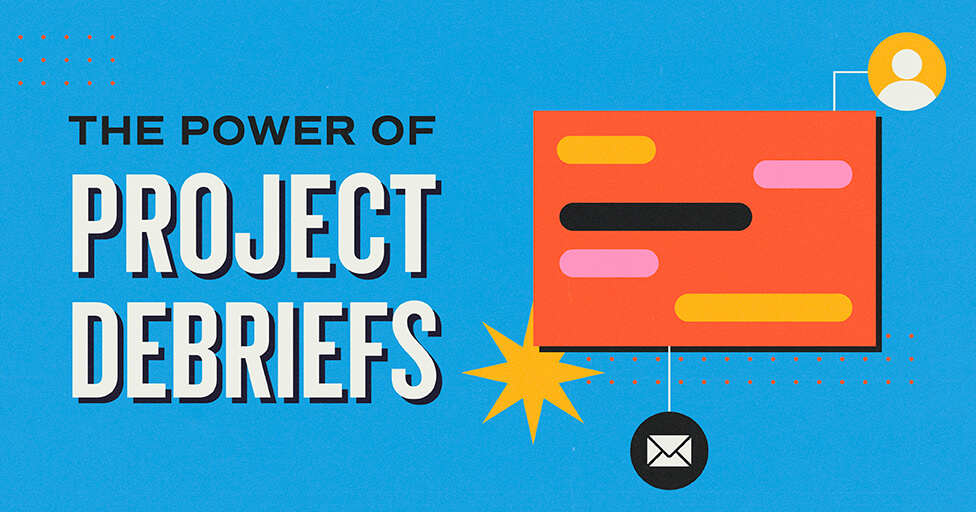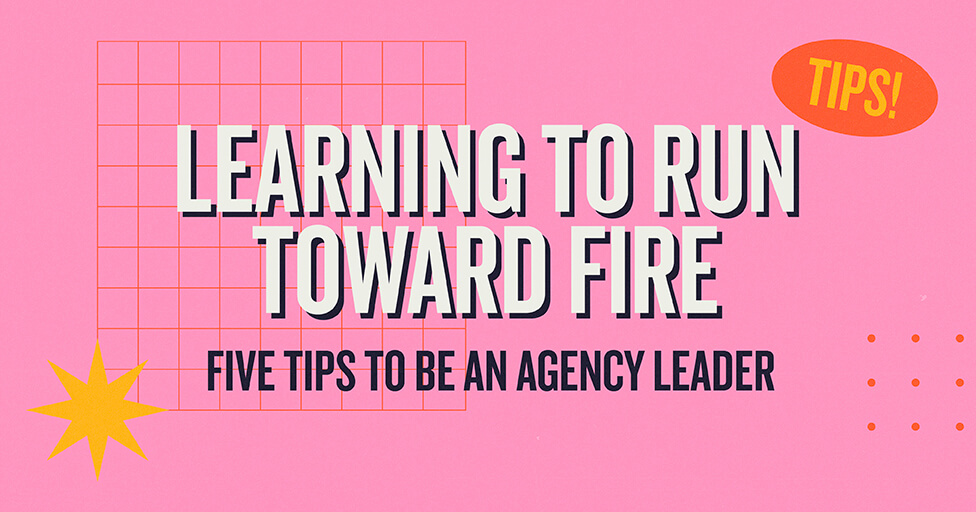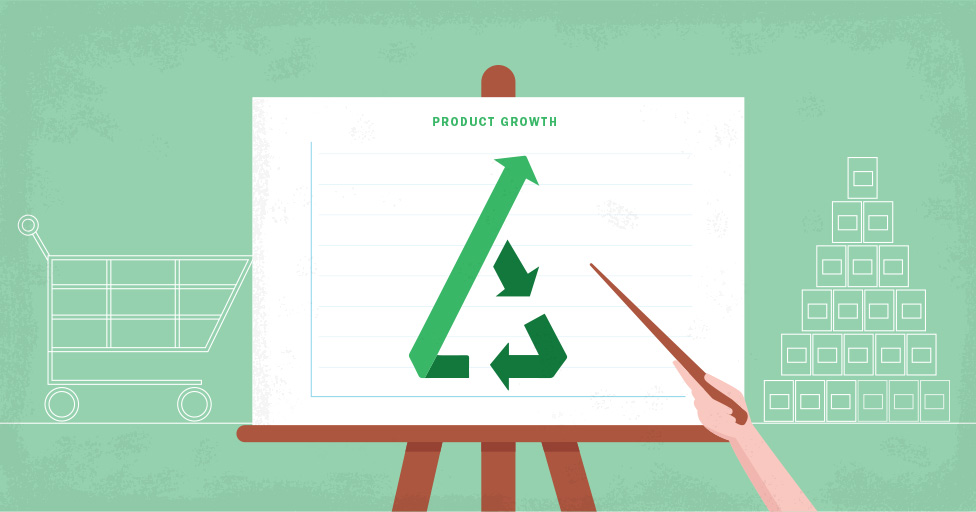
What is one quick way to see growth in the CPG market? Institute sustainability practices your company values and then advertise those practices to your consumers.
According to a study by the New York University Stern Center for Sustainable Business, Sustainability-marketed products drove higher profits for 90% of individual product categories in 33 of 36 examined; see the graphic below from the study.
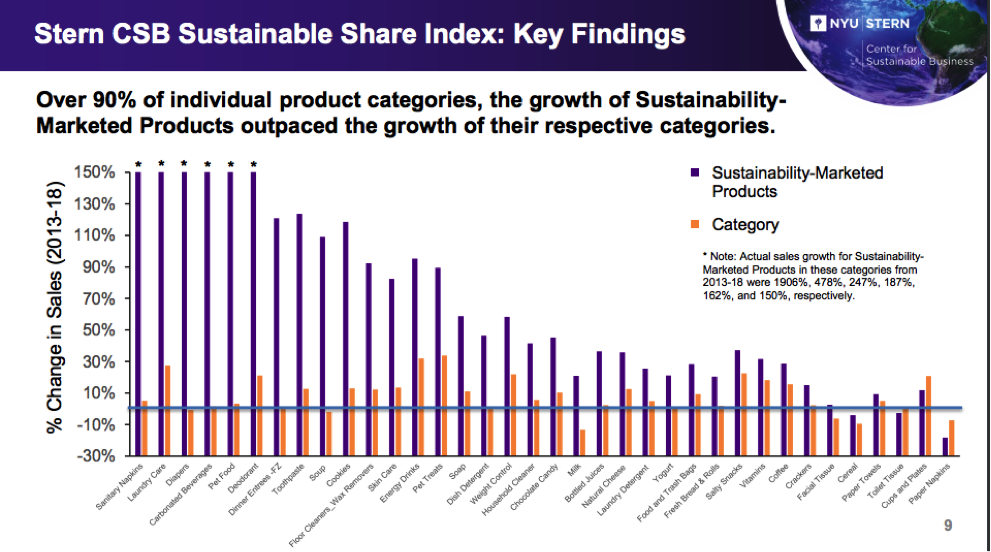
Sustainability-marketed products are only 16% of the market, though they drove more than half of the market growth. Specifically, toilet tissue, facial tissue, coffee, salty snacks, yogurt, bottled juice, and milk categories show the most shares greater than 18%, respectively.
Think about these three things when incorporating a sustainable message into your brand strategy:
- Incorporate sustainability attributes into the overall brand message. Study after study shows sustainable business is good business. Take it from bigger CPG companies such as Nestle, Unilever, and General Mills, who have updated their mission statements and brand marketing to include sustainability-branded attributes. Try this tactic to incorporate a sustainable message into your overarching brand strategy. Add tactical messaging to your website and within your paid/earned content marketing strategies as well. Live it and breathe it in all you do. When it becomes a real and authentic effort, employees will spread the word and consumers will experience the results.
- Integrate a sustainability message into your overall marketing and engagement plan, especially if your brand is targeting millennials.
- Not only does it sell (many competitors report), but also it becomes a determinant in numerous consumer purchase decisions. When consumers seek out sustainability-conscious brands, the reward of increasing market share will be a result of weaving this messaging into your product marketing efforts.
- Per the CBGCC Study, millennials are 53% more likely than baby boomers to forgo a brand in order to buy products that are environmentally-friendly. (The Conference Board Global Consumer Confidence Survey in collaboration with Nielsen, Q2 2017) Therefore, targeting them in the moments leading up to their purchase decision is very important. Creating a digital-first approach that makes sense and one that increases the awareness of your sustainable brand in the marketplace is key to winning over your audience to get their attention before they purchase.
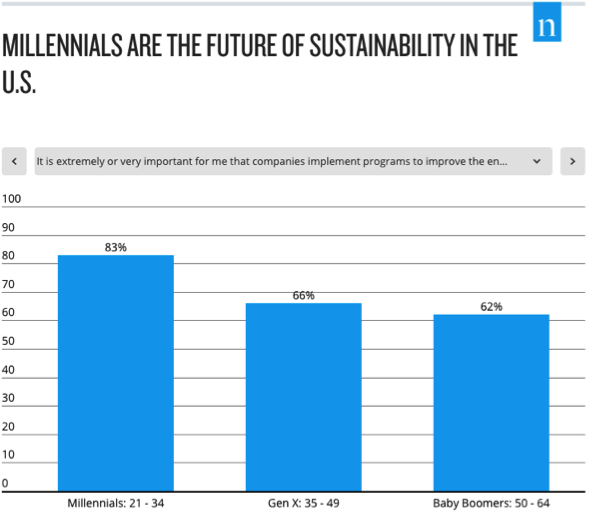
- Evaluate your product portfolio and make sure product packaging speaks to sustainability-conscious consumers.
- A recent article on FoodDive confirmed 85% of brand owners have changed packaging materials in the past two years to make them more easily recyclable. After purchasing a product, it is important to have packaging that educates the consumer on how to use it and further how to best dispose of it using sustainable practices. Plus, this can be a fun way to add a colorful callout on your packaging.
- One brand I really like that is living out their motto is “Seed Phytonutrients.” They sell natural hair, face, and body products and have made the first-ever shower-friendly paper bottle. Each bottle is made from 100% post-consumer recycled paper and lined with it too, resulting in 60% less plastic than a standard bottle.
It is never too late to craft a sustainability story into part or all of your product lines. Are you communicating what you are doing to your audience yet? Do you need help formulating a strategy in which to do so? Give us a shout; we would love to help you develop your sustainability story in a fun way.
Source
Subscribe to our newsletter
Get our insights and perspectives delivered to your inbox.
